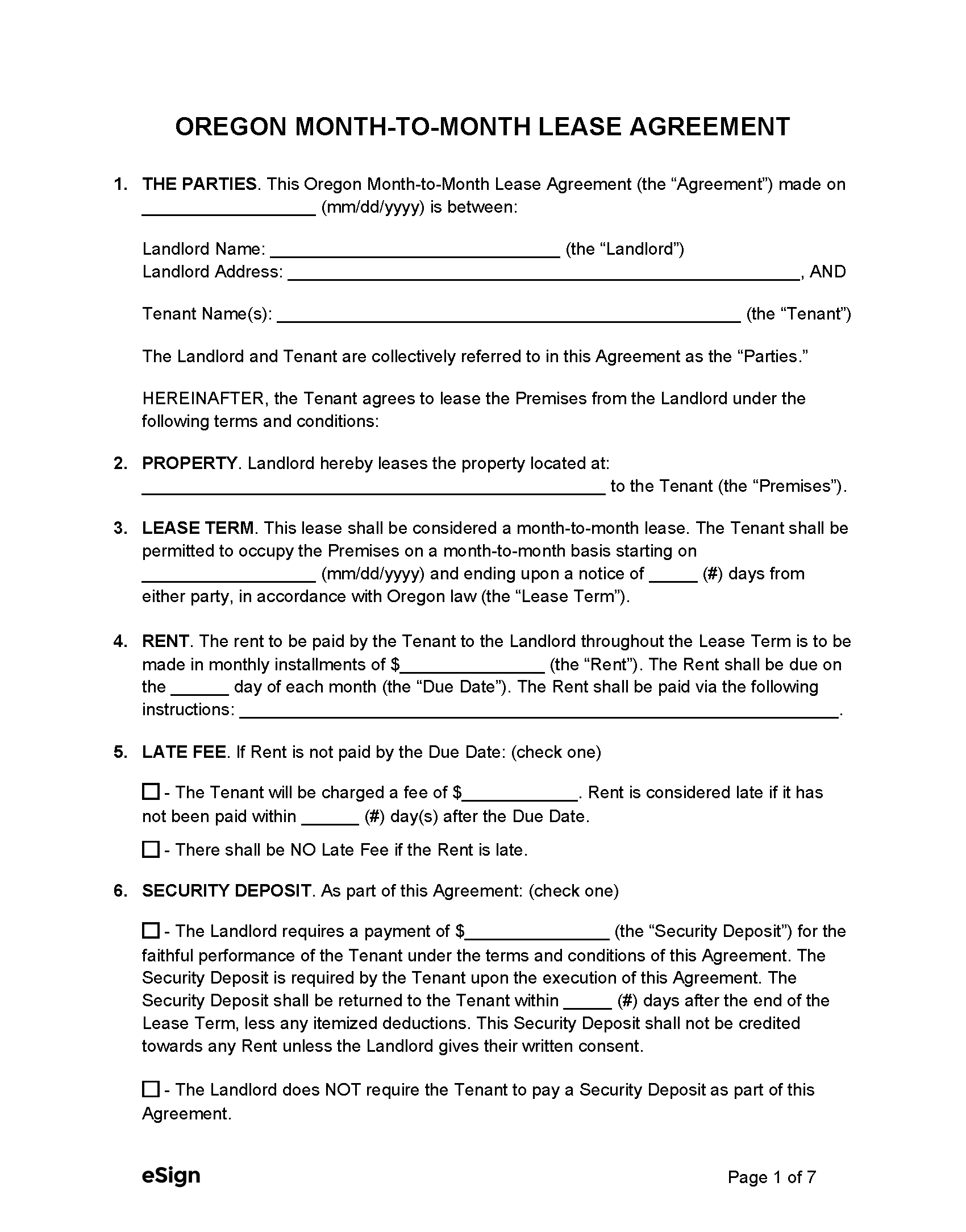Oregon Month-to-Month Lease Agreement
An Oregon month-to-month lease agreement defines the terms and conditions of a rental arrangement where a tenant leases a landlord’s property one month at a time . Unlike fixed-term leases, month-to-month agreements do not have a set termination date. Instead, they renew automatically but can be terminated for any reason with 30 days’ notice.
Oregon Month-to-Month Lease Agreement
An Oregon month-to-month lease agreement defines the terms and conditions of a rental arrangement where a tenant leases a landlord’s property one month at a time . Unlike fixed-term leases, month-to-month agreements do not have a set termination date. Instead, they renew automatically but can be terminated for any reason with 30 days’ notice.
PDF Download
Email Delivery
Word Download
Email Delivery
ODT Download
Email Delivery
Last updated January 16th, 2024

An Oregon month-to-month lease agreement defines the terms and conditions of a rental arrangement where a tenant leases a landlord’s property one month at a time . Unlike fixed-term leases, month-to-month agreements do not have a set termination date. Instead, they renew automatically but can be terminated for any reason with 30 days’ notice.
4.8 | 14 Ratings
Downloads: 1,172

- Home »
- Lease Agreements »
- Oregon »
- Month-to-Month
Rental Application – Residential landlords can use this document to record a lease applicant’s info and obtain their permission for a credit and background check.
Month-to-Month Laws
- Termination Notice – A minimum of 30 days’ notice is required to terminate a month-to-month lease agreement. [1]
- Rent Increase Notice – Landlords must provide at least 90 days’ notice before raising a tenant’s rent, and no rent increases are allowed during the initial year of the tenancy. [2]
Required Disclosures (9)
- 100-Year Flood Plain – If a dwelling unit is located in a 100-year flood plain, the landlord must disclose this information to the tenant. [3]
- Carbon Monoxide Alarm Instruction – If the leased property contains a source of carbon monoxide, the landlord must install a carbon monoxide detector and provide tenants with written instructions on how to test and operate the device. [4]
- Condition Report (City of Portland Only) (PDF) – A property condition report must be completed before the tenancy begins, either by both parties or the landlord alone. In the latter case, the tenant will have seven days to reject or accept the report . [5]
- Disclosure of Legal Proceedings – If the property has four or fewer rental units, the landlord must disclose whether any of the circumstances listed in § 90.310(1) apply to the property. [6]
- Identity Disclosure – The tenant must receive the names and addresses of the property manager and the building owner or an agent of the owner who is permitted to accept notices, demands, and court-issued documents. [7]
- Lead-Based Paint Disclosure (PDF) – This disclosure reveals whether lead-based paint is present in the rental unit (only required for pre-1978 housing). [8]
- Recycling Instructions – If the property has five or more rental units and is located within an urban growth boundary, landlords must provide recycling instructions to their tenants at least once a year. [9]
- Smoking Policy – Each residential lease must include a smoking policy to inform tenants where they can and cannot smoke. [10]
- Utility and Service Disclosure – If the tenant is charged a fee for a utility or service that directly benefits other tenants or the landlord, this information must be indicated in the lease agreement. [11]



